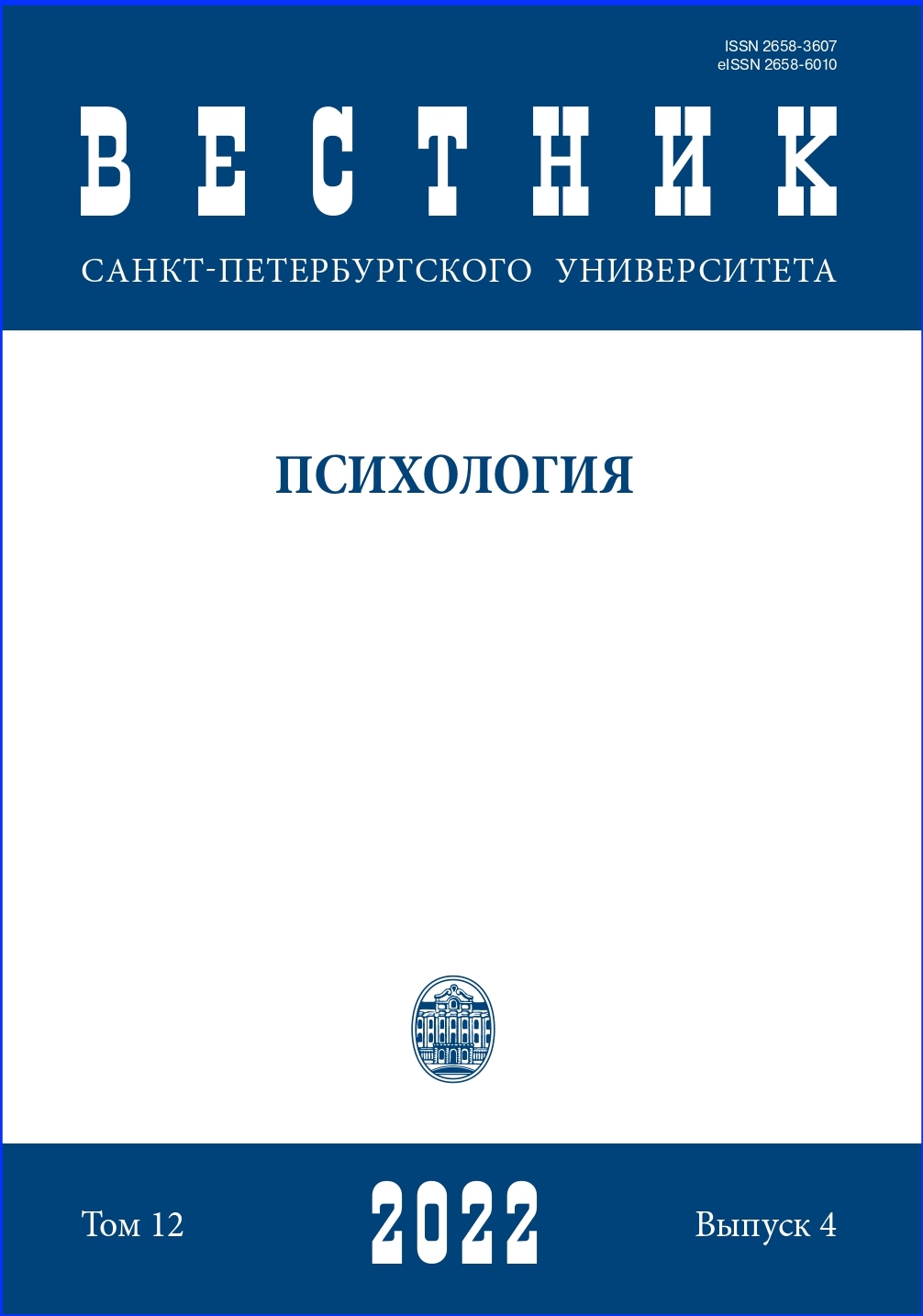Daily stress and life satisfaction of teenage girls
DOI:
https://doi.org/10.21638/spbu16.2022.403Abstract
Everyday stressors of teenage girls are considered. The purpose of the study: development and testing of the questionnaire of everyday stressors for adolescents; determination of the intensity of various spheres of life; revealing the ratio of stress tension and life satisfaction. Methods: the author’s questionnaire of everyday stressors for adolescents, the stress perception scale ShVS-10 (V.A.Ababkov et al.), the life satisfaction scale (E.Diener et al.). Factorization made it possible to single out 7 blocks of events related to the areas: “Loneliness, fears”; “Finance”; “School, study”; “Rejection”; “Communication with seniors”; “Case, planning”; “Competition, self-attitude”. The α-Cronbach fitness coefficient for the entire questionnaire was 0.956. Content and convergent validity were checked using comparative, correlation, factorial, regression analysis. Correlation analysis revealed direct links between the number of stressful events and the strength of experience with “Overstrain”, “Stress counteraction”, “Perceived stress” of the ShVS-10 methodology, which confirmed the convergent validity of the questionnaire. Typological analysis showed a higher level of stress load in girls with low life satisfaction. Correlation analysis revealed negative relationships between life satisfaction and the number of stressors (p≤0.05), the intensity of the experience (p≤0.01), and the indicators of the SHVS-10 method (p≤0.01). Regression analysis showed that life satisfaction is a predictor that reduces the level of perceived stress (p≤0.000), overexertion (p≤0.000), resistance to stress (p≤0.000), the number of stressors in the areas “Loneliness, fears” (p≤0.000); “Finance” (p≤0.006); “School, study” (p≤0.026); “Rejection” (p≤0.003), “Communication with elders” (p≤0.001). Thus, a high level of life satisfaction can act as a factor contributing to the reduction of stress load.
Keywords:
adolescence, everyday stressors, perception of stressors, overstrain, life satisfaction
Downloads
References
References
Downloads
Published
How to Cite
Issue
Section
License
Articles of "Vestnik of Saint Petersburg University. Psychology" are open access distributed under the terms of the License Agreement with Saint Petersburg State University, which permits to the authors unrestricted distribution and self-archiving free of charge.




